(Curso en Diseño de controladores basado en álgebra lineal)
Gustavo Scaglia
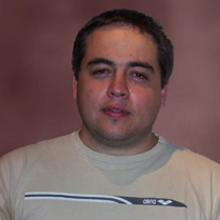 Institute of Chemical Engineering at the National University of San Juan (Argentina).
Institute of Chemical Engineering at the National University of San Juan (Argentina).
Session 1 October 12nd: Theoretical Framework Hour: 14-17 Room: (19-807)
Session 2 October 13rd: Practical Session Hour: 14-16 Room: (38-323)
Session 3 October 14th: Theoretical Framework Hour: 14-16 Room: (19-807)
Session 4 October 15th: Practical Session Hour: 14-16 Room: (18-305)
Gerardo Espinosa, Universidad Autónoma de México.
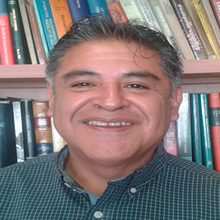 He was born in Mexico DF on April 8th of 1961, He received the title of Mechanical and Electrical Engineering from UNAM in 1987, a Master Degree of Science in Electrical Engineering of the CINVESTA-IPN in 1989 and the Master Degree of Electric Engineering from UNAM in 1993 (with honors), the latter two specializing in Automatic Control. He has worked under different categories, in UNAM since 1986, currently being Professor of Race Final Full Time Title B. His main research is control of nonlinear systems with an energy approach. To date he has published about 40 research papers in international magazines and about 100 articles in international congresses. In 1996 his work on Control of Electrical Machines was considered one of the three most important global trends in an article in the Journal IEEE Control Systems Magazine He was president of the Association of Automatic Control Mexico during 2005-2006 and since 1992 belongs to the National System of Researchers Research currently being National Level II. To date, his research has received about 750 appointments.
He was born in Mexico DF on April 8th of 1961, He received the title of Mechanical and Electrical Engineering from UNAM in 1987, a Master Degree of Science in Electrical Engineering of the CINVESTA-IPN in 1989 and the Master Degree of Electric Engineering from UNAM in 1993 (with honors), the latter two specializing in Automatic Control. He has worked under different categories, in UNAM since 1986, currently being Professor of Race Final Full Time Title B. His main research is control of nonlinear systems with an energy approach. To date he has published about 40 research papers in international magazines and about 100 articles in international congresses. In 1996 his work on Control of Electrical Machines was considered one of the three most important global trends in an article in the Journal IEEE Control Systems Magazine He was president of the Association of Automatic Control Mexico during 2005-2006 and since 1992 belongs to the National System of Researchers Research currently being National Level II. To date, his research has received about 750 appointments.
Control of Electric Power Systems: A Hamiltonian approach.
Summary:
Electrical power systems establish an emblematic example of the new scenario that control theory faces. They are naturally complex systems due to the insertion of new technologies in generating units and transmission lines and loads, pose a problem of control excessively complicated. Paradoxically, these are new technologies that also offer new alternatives to ensure safe and reliable operation of the network, to have based on power electronics devices and modern communication systems (digital layer), among others. The purpose of this talk is to illustrate how the proper use of modeling can play a key role in finding solutions control at different levels that can be divided network structure. Specifically, it first shows how such systems can be decomposed into the interconnection of dynamical systems with Hamiltonian structure, which together define a new system with the same type of structure. Subsequently, some successful experiences are reviewed in control of the separate elements to finish showing that the network as a whole can be approached from the perspective of controlling multi-agent systems with Hamiltonian structure. Throughout the discussion a relationship between the particular problems of power networks with the problem that exists in control of Hamiltonian systems in a general theoretical framework is established.
Session 1 October 13rd: Theoretical Framework Hour: 14-15:30 Room: (19-807)
Session 2 October 13rd: Theoretical Framework Hour: 15:30-17 Room: (19-807)
Session 3 October 14th: Theoretical Framework Hour: 14-15:30 Room: (19-808)
Session 4 October 14th: Theoretical Framework Hour: 15:30-17 Room: (19-808)
(Curso en Optimización para grandes problemas)
Iván García
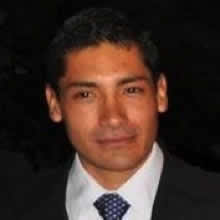 In the field of parameter estimation (system identification), the state of the art offers solutions that are appropriate for fairly small systems with ~10 degrees of freedom. Applications in geo-sciences, nevertheless, deal with systems several orders of magnitude bigger. Moreover, the governing equations for these type of systems are non-linear and in some cases chaotic. Generally, mathematical models that simulate the behavior of these systems are complex and computationally expensive. For these cased, system identification theory has very limited applicability. A possible solution to these limitations is using reduced order models (ROM) that are able to reconstruct the most relevant processes of the system of interest. The implementation of ROMs alleviate the problems by reducing the number of degrees of freedom and approximating the governing equations with a linear system.
In the field of parameter estimation (system identification), the state of the art offers solutions that are appropriate for fairly small systems with ~10 degrees of freedom. Applications in geo-sciences, nevertheless, deal with systems several orders of magnitude bigger. Moreover, the governing equations for these type of systems are non-linear and in some cases chaotic. Generally, mathematical models that simulate the behavior of these systems are complex and computationally expensive. For these cased, system identification theory has very limited applicability. A possible solution to these limitations is using reduced order models (ROM) that are able to reconstruct the most relevant processes of the system of interest. The implementation of ROMs alleviate the problems by reducing the number of degrees of freedom and approximating the governing equations with a linear system.
My work focuses on the efficient construction of ROMs for existing complex mathematical models. By using the information contained in a ensemble of simulations we are able to: (1) identify a subspace with limited degrees of freedom that minimizes information loses, and (2) reconstruct a linear approximation capable of simulating the complex dynamic system of interest. By using the ROM the available theory on system identification can be efficiently used.
1. Finite difference approximation & variational schemes.
2. Reduced order model construction.
3. Data assimilation and reduced order models.
Session 1 October 13rd: Theoretical Framework Hour: 14-15:30 Room: (19-808)
Session 2 October 13rd: Theoretical Framework Hour: 15:30-17 Room: (19-808)
Session 3 October 15th: Theoretical Framework Hour: 14-15:30 Room: (18-315)
Session 4 October 15th: Theoretical Framework Hour: 15:30-17 Room: (18-315)
(Control Predictivo y Juegos Poblacionales con Aplicaciones en Ingeniería)
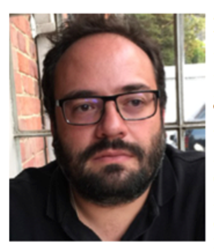
Electrical engineer from the Universidad Pontificia Javeriana, Master and Doctor in Computational Electrical Engineering from the University of Ohio in United States
profesores.uniandes.edu.co/nquijano/
Carlos Ocampo Martínez
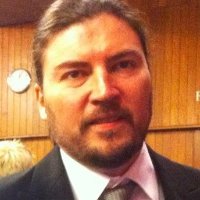
Electronic engineer and Master of Industrial Automation from National University of Colombia and PhD in Control Engineering from the Polytechnic University of Catalonia Barcelona.
www.iri.upc.edu/people/cocampo/Carlos_Ocampo-Martinez_Homepage/Home.html
Session 1 October 13rd: Practical Session Hour: 16-18 Room: (38-323)
Session 2 October 14th: Practical Session Hour: 16-18 Room: (38-323)
Session 3 October 15th: Practical Session Hour: 14-16 Room: (38-323)
Session 4 October 15th: Practical Session Hour: 16-18 Room: (38-323)
Dr. Antonio Morán Cárdenas
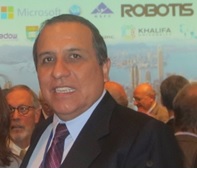
Dr. Antonio Morán obtained the Doctor and Master degrees in Engineering from Tokyo University of Agriculture and Technology, Japan, where he has been associate professor and scientific researcher in the Laboratory of Robotics and Control Systems. He has been president of the IEEE Robotics and Automation Society RAS, Peru Chapter, and obtained the 2014 Best Society Award in the International Conference in Robotics and Automation ICRA held in Hong Kong, China.
Dr. Moran is a visiting professor at Tokyo University of Agriculture and Technology, Japan, and Stockholm University, Sweden. He is a professor at the Graduate School of Pontifical Catholic University of Peru, and technical manager of Technova SAC, company providing engineering solutions to industry.
His research interests include computational intelligence, integration of neural networks, fuzzy logic and genetic algorithms, learning systems, mobile robots, nonlinear systems modeling and control, and their industry applications.
Session 1 October 12nd: Practical Session Hour: 14-16 Room: (18-305)
Session 2 October 12nd: Practical Session Hour: 16-17 Room: (18-305)
Session 3 October 14th: Practical Session Hour: 14-16 Room: (18-305)
Session 4 October 14th: Practical Session Hour: 16-18 Room: (18-305)